

Seepage Control, Inc. has been in the business of lake sealing and building pond liners for over 50 years. We are a proponent and manufacturer of ESS-13, an environmental soil sealant, and have been involved with nearly every type of lining system. Click here to contact us.

Water replacement can represent a significant on-going cost in the management of a pond. Evaporation will be inevitable with a pond, and utility use can be managed closely, but in order to minimize water loss from seepage, several lining options should be considered. These include native soil, ESS-13, bentonite, and synthetic products. Pond lining solutions such as these help seal the pond to reduce or prevent seepage. The best solution will be determined by the makeup of the soil, the amount of loss occurring, the current state of the pond (empty or full), and the budget for the project.
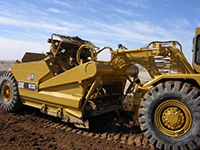 |
Native soil - Native soil is probably the least expensive option for creating a pond liner. However, not all native soil is suitable for holding water. Imagine a sieve full of sand. The sand doesn’t have the ability to retain water and so the water runs immediately out of the bottom. However, if the sieve was smeared a few layers of pottery clay and allowed to dry a bit then the sieve would do a much better job holding the water. One good way to determine the suitability of a particular soil as a pond is to have a soils lab run a permeability test (D5084). A typical desired perm rate would be somewhere around 1.0x10-7 cm/s. A pond liner built from this type of soil could then be built at a 18-24” depth and do a suitable job of holding water in a pond with a maximum depth of say 10-12 ft. |
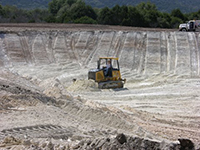 |
Bentonite - In some cases when the native soil isn’t of sufficient quality for constructing a pond liner additional bentonite can be brought in as an additive. In this case bentonite is blended with soil on-site to amend the quality of the soil to reduce permeability. In order to determine the amount of bentonite necessary it’s a good idea to have the soil analyzed by a soil lab (typical blend is about 5%-10% by weight bentonite/native soil). Bentonite can also be applied as a blanket over an existing pond surface. Bentonite is typically applied 1" to 4” thick and then covered with a protective layer of soil. Once installed, the entire site needs to be moisturized and compacted. |
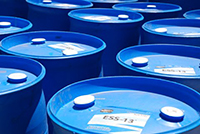 |
ESS-13 - ESS-13 pond lining is environmentally friendly and cost effective. ESS-13 is a proprietary chemical manufactured in the US and has been in use and continued development since 1958. ESS-13 has the unique ability to be either applied to a full “leaking” pond or during the construction phase of a new pond. An application of ESS-13 migrates throughout the entire pond covering every square inch of soil and is drawn into those areas where the seepage is occurring. |
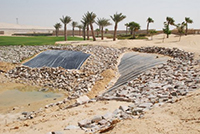 |
Plastic - Plastic pond liners can be fabricated from a variety of materials: HDPE, EPDM, PVC, as well as others. EPDM is the most common because of it’s relatively inexpensive cost. All of the plastics are very good at retaining water and one might say they retain water “perfectly”. However, there are some major factors to consider with selecting this material as a pond liner. The first is the longevity of the material. Most plastics are susceptible to UV breakdown a plastic liner will eventually rot and need to be replaced. One exception to this is HDPE, but HDPE liners can be very expensive. |
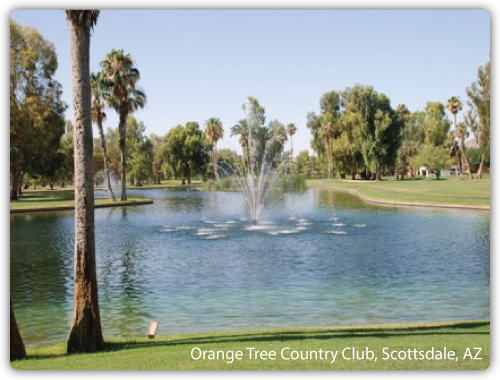
The first phase, planning, begins with determining an overall size and shape of the pond that will allow the pond to fit suitably on the available property. Source water for the pond will be needed from a well, river, watershed, or utility, and this will provide some constraints in the design process. Once the pond has water in it, loss will begin in the form of seepage, evaporation, and utility use. Water replacement can represent a significant on-going cost. Evaporation will be inevitable with a pond, and utility use can be managed closely, but in order to minimize water loss from seepage, several lining options should be considered. This decision is critical and is discussed in more detail later.
The purpose of the pond should also be considered in the planning stage. Uses may include fishing, swimming, skiing, and irrigation, and each will bring design requirements into play. Not all designs are possible, and one easily overlooked aspect is slope angle and overall depth of the pond. It is impossible to compact soil for a pond in a vertical wall like a swimming pool. In almost all cases a ratio of 1:2, or 30 degrees, represents the extreme maximum slope achievable. For a given pond design, this slope will limit the possible depth.
It is also important to plan for on-going pond management, aeration, and stocking. Without proper aeration and cleaning, problems with algae, weeds, and other pond nuisances will develop. Aeration is also key to keeping water clarity high. Having fish in the pond will involve habitat requirements based on the type of fish, and it will be necessary to have a plan for on-going data collection and management.
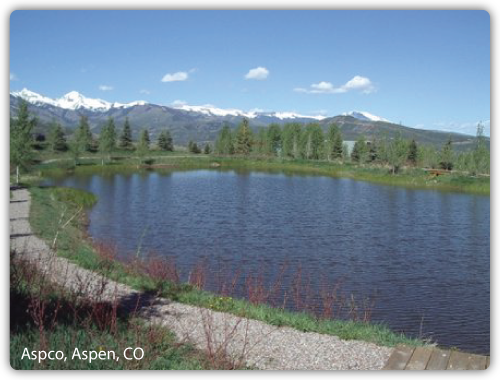
Once a plan is in place, and the design work has been completed, the actual construction of the pond begins. Permits may be necessary, depending on state regulations. Dirt work begins with the pond being dug out and shaped to requirements. In order to seal the pond against water loss, a pond lining should be put in place as discussed above. The guts of the pond will include a water source and plumbing, including aerators, fountains, recirculators, and waterfalls. At this point, the pond will be filled with water, and stocking with fish can take place as a finishing touch. Given the amount of information and number of decisions involved in pond construction, it is possible that hiring a pond contractor could be the most time- and money-efficient decision. Many factors come into play, and an experienced contractor is a valuable resource.
Finally, everyone wants to enjoy the pond and all the hard work that went into it! To increase the benefit of a pond, access can be improved with cart paths, bridges, docks, or boat houses. You can also give Mother Nature a helping hand by proactively planting trees and bushes to improve the appearance of the pond and provide protection from erosion. However, it is important to remember that irrigation may be necessary for any non-native vegetation and tree roots should be kept away from levees or other compacted areas. On the flip side, a major area of potential pond-related stress includes on-going maintenance and repair. In some cases, it is best to avoid headaches by hiring a pond management company to take care of the details. Damage to the pond lining or inadequate sealing can produce problems over time and be time-consuming to handle.
Hiring an experienced, reputable contractor to facilitate the building of the pond can save a lot of headaches in the long run. Some might feel that building a pond is not much more than digging a hole in the ground and putting a hose in to fill it up. While this method may have worked on a select number of lakes, it is by no means typical. Every pond and lake has its own unique characteristics that have to be considered before, during and after construction. An experienced contractor can help navigate these challenges in real time as opposed to further down the line when issues are much more difficult to resolve.
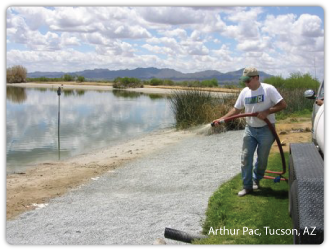
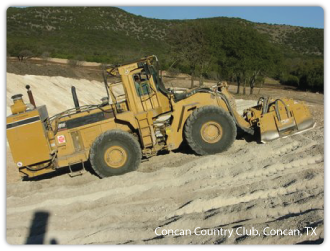
THINGS TO CONSIDER WHEN PICKING A CONTRACTOR:
We at Seepage Control, Inc have been building lakes all over the United States as well as other parts of the world since 1958. We have seen a lot through the years. Having our fair share of success and failure we have become keenly aware of many of the issues surrounding pond construction and repair. One key thing we have learned is that by taking measured steps involving soil testing, proper liner selection, intimate construction oversight, and water balance analysis the odds of a successful pond project dramatically increase. If you are interested in speaking to one our On-Site Field Representatives please contact Seepage Control.
Perhaps the most important question to ask when looking to build a pond is -- Why? Is the goal to build a trophy bass fishing pond, a ski lake, a recreational venue? Most of us can envision what we’d like to do at our new lake and we need to make sure that we include this in our planning as well. Will you need a fixed boat dock? These are much easier to build during the construction phase than later on once the lake is full. What sort of fish habitat structures are helpful to creating a healthy fish population? Again an empty lake is much easier to work on than one that has been filled up with rain water.
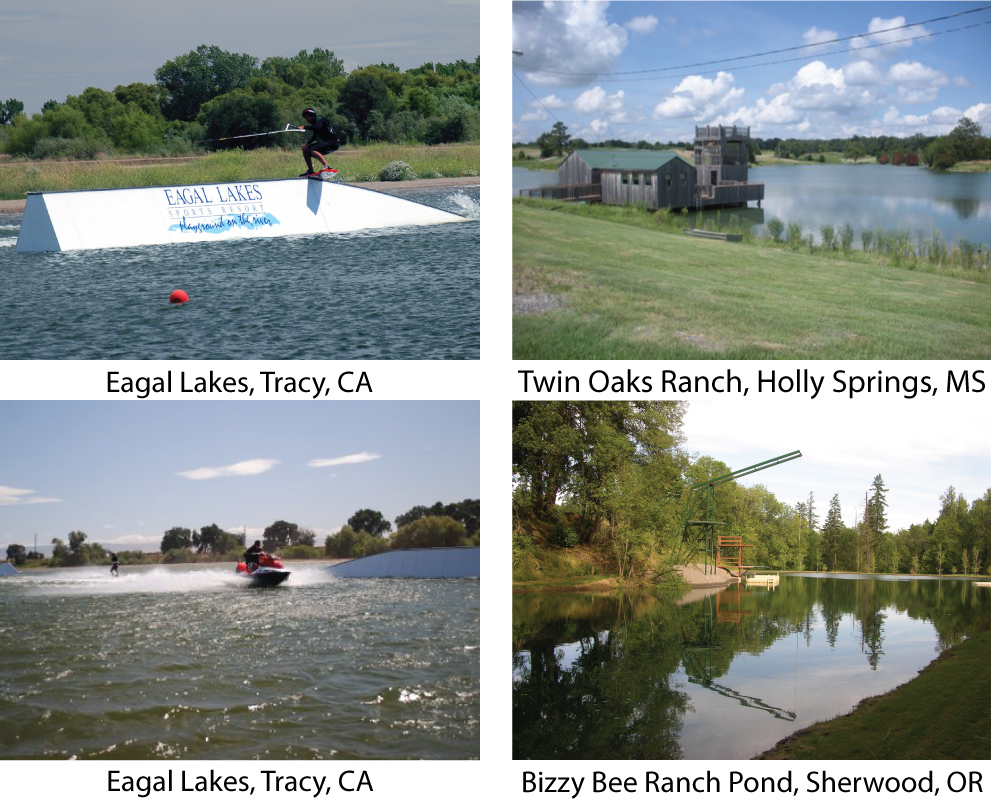
Whatever dreams you’re hoping your new lake fulfills, the team at Seepage Control is available to walk you through the entire lake building process.